Classic bathroom curtains
Curtains made of soft materials, such as fabrics impregnated with water-resistant compounds or thick PVC foil, have long become commonplace in our bathrooms. To transform the design of the bathroom, sometimes it is enough to change such a curtain.
Curtain mounting options
Classic fabric curtains differ in the way they are attached to the guides.
- Clothespins. Clothespins, which are called "crocodiles", have their pros and cons. An obvious plus - it is not necessary to make holes for fasteners in the curtain. Cons: metal "crocodiles" in the humid air of the bathroom quickly rust, lose their appearance and stain the curtain, moreover, when the curtain is suddenly opened, they can "release" the curtain.
- Rings. Rings or hooks threaded into specially made holes in the curtains are put on the curtain rod. For commercial bathroom curtains, these holes are usually reinforced for greater strength.
- Eyelets. This is the most elegant, but at the same time the most expensive type of fastening. Holes are made in the fabric, which are bordered by metal plates. The holes are sized to allow the mounting rod to pass freely through them. This solution looks very stylish and modern, in addition, the curtain can slide smoothly.
- Magnetic clamps. Fabric loops are equipped with rivets at the ends with magnets embedded inside. Usually they have a decorative appearance, and are able to decorate a structure that isolates the wet area. Fix the curtain, grabbing it with clamps, and threading a barbell into the resulting loops. The magnets fit quite tightly together, and the shutter holds well. However, this type of fastening is not recommended for heavy fabrics.
- Pocket. A "pocket" is made at the upper edge of the curtain, tucking it up and sewing it in such a way that the bar can freely enter the resulting space. The shutter is put on the bar, threading it into the resulting "sleeve", and then fixed to the designated place. This method has a significant drawback - the curtain moves quite hard along the guide, however, using curtain grabs, this drawback can be eliminated.
- Ceiling cornice. The curtain can be fixed with a ceiling cornice - a solution common in living rooms and very rarely used in a bathroom. By equipping the curtain with chains or bundles attached on one side to the curtain itself, and on the other, with the help of hooks, to the cornice, you can get a very original and decorative version of the bathroom design.
Curtain materials
The most familiar and reliable material for a bathroom curtain is polyester... It is a polyester polymer, which is quite soft and pleasant to the touch.It is easy to clean, durable, resistant to harsh chemicals and virtually impervious to water vapor and splash.
It is possible to increase its moisture-proof properties by impregnating it with a special composition, while the service life of such a fabric is at least ten years. Curtains are easy to care for, they can withstand both hand and machine wash, while the temperature should not be higher than 40 degrees. The curtains can be ironed, making sure that the iron is not hot.
Fabric curtains they look very decorative, but a prerequisite for using them in the bathroom is moisture-proof impregnation. The sizes of the curtains are selected depending on the size of the bathroom and the desired decorative effect. For example, the length can be "to the floor", either to the side of the bath, or to the middle of the height of the bath.
The colors are chosen in accordance with the design of the room, and can be either calm, background, or bright, acting as the main decorative accent. In the latter case, you can choose curtains with active graphic or national patterns, or decorated with photo prints.
Whichever material you choose, a bathroom equipped with such curtains will look luxurious, and caring for it does not require much time and effort, because it is enough to wash and iron the curtains.
Roller blinds
Roller blinds are usually used to decorate windows in kitchens, living rooms, bedrooms, on summer terraces. However, they are also very appropriate in the bath, as they allow you to save space - it is enough to raise the curtain to the ceiling.
The material for roller blinds, which is supposed to be used in the bathroom, must withstand the ingress of water on it, so the fabric must be treated with a waterproof compound. Dirt does not linger on such a fabric, so it is easy to care for it: just wipe it with a sponge and detergent and rinse with water.
While roller blinds are rarely used in bathroom equipment, it is difficult to find a suitable illustration. However, it is easy to imagine how it will look if you look at the curtain you like in the interior of a living room or kitchen.
Glass partitions for the bathroom
Fixed partitions made of glass
Glass partitions fixed permanently are quite convenient to use. They are made of tempered glass; such protective devices are completely safe to use. Fixed partitions usually cover part of the shower cabins, and they are also installed on the bath - up to half of its length.
Glass completely does not let water through, even if it is poured with a direct stream Glass for the manufacture of partitions can be both transparent and opaque, have a pattern or a relief surface, which makes it possible to create various interior solutions.
Glass sliding partitions
In shower cabins, glass partitions are often used, which move along special guides. A similar design can extend from floor to ceiling, or to the side of the bath - if installed on it. This allows you to completely isolate the wet area, however, the installation of such a system requires the participation of specialists, since the ease of movement of the movable glass walls will depend on the accuracy of the installation of the guides.
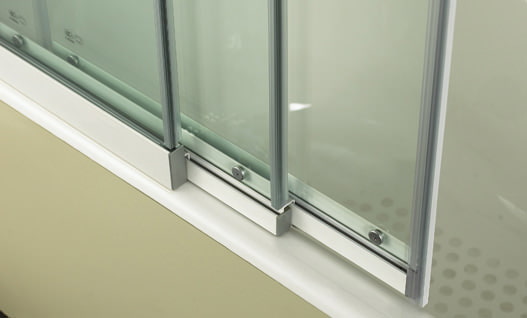
The sliding partitions are quite demanding to maintain, every time after washing, you will have to carefully wipe all the details of the structure in order to avoid the appearance of deposits of hardness salts and rust, which impede the movement of the flaps.
Glass doors
The wet area in the bathroom can be separated from the rest of the room with a glass wall with doors, which is a much more practical solution than curtains. In this case, water and condensate are guaranteed not to fall outside the wet area. Attention should be paid to the quality of metal structural elements - profiles, fasteners, handles: rusty stains on tiles and glass will not decorate the room.

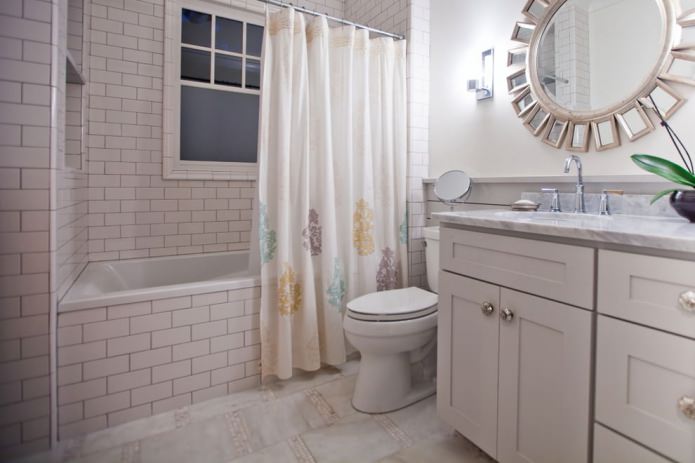
 10 practical tips for arranging a small kitchen in the country
10 practical tips for arranging a small kitchen in the country
 12 simple ideas for a small garden that will make it visually spacious
12 simple ideas for a small garden that will make it visually spacious
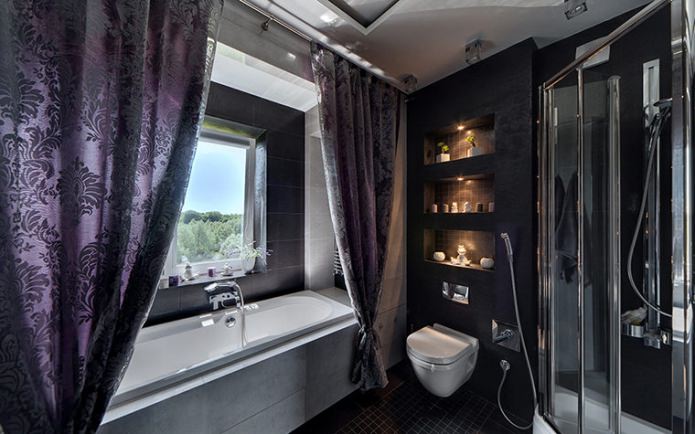
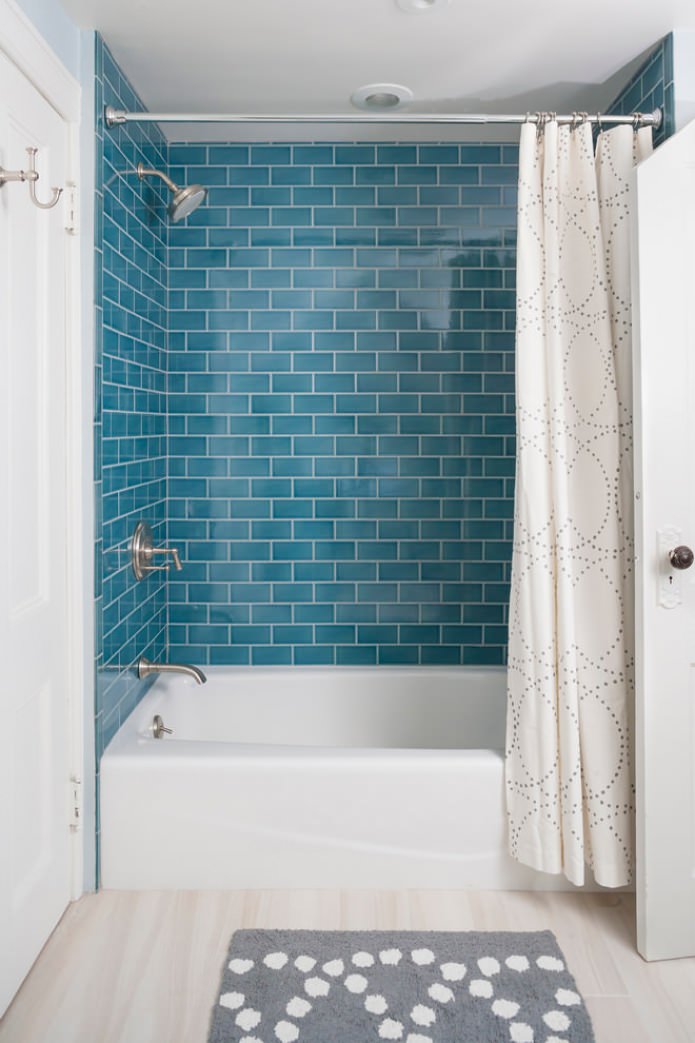
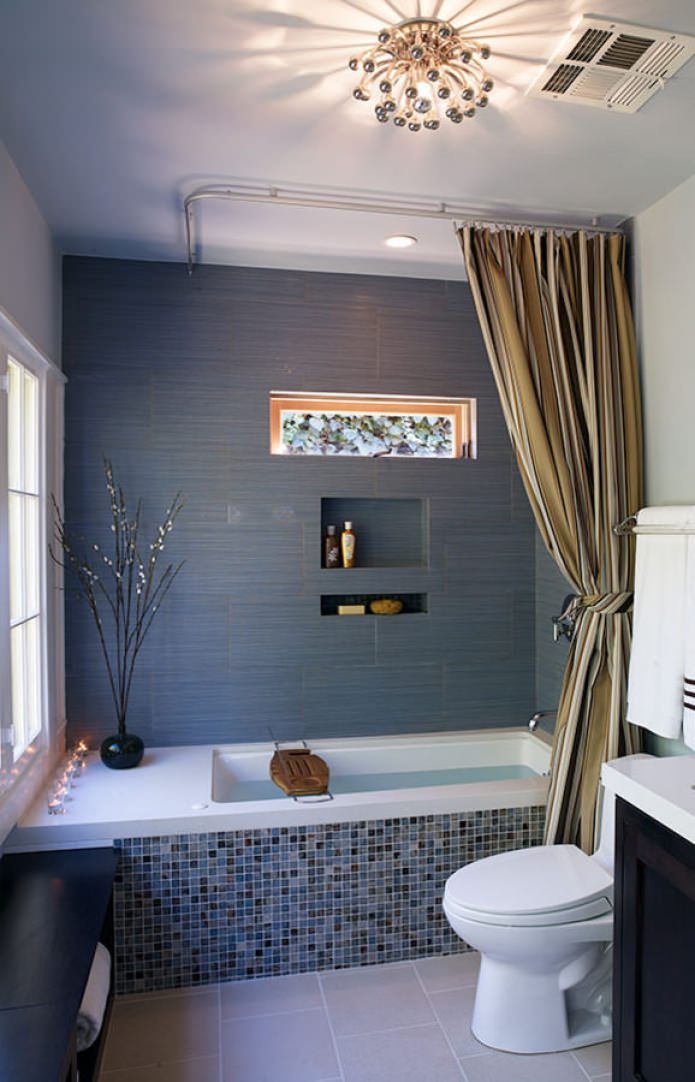
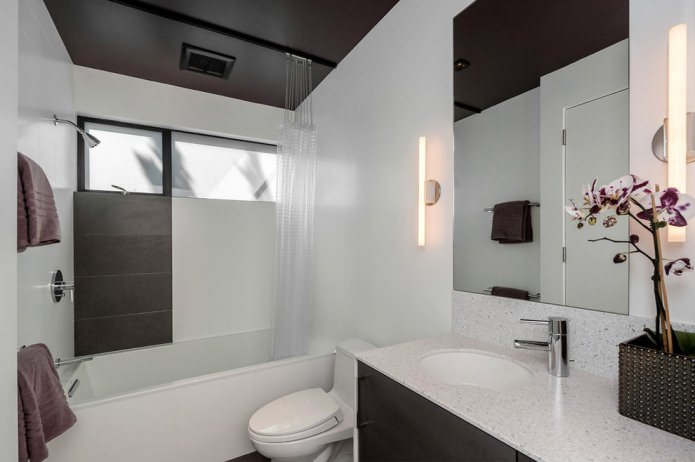
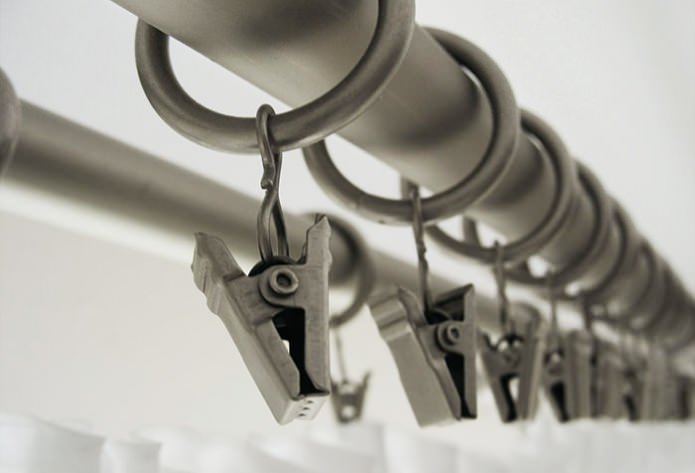
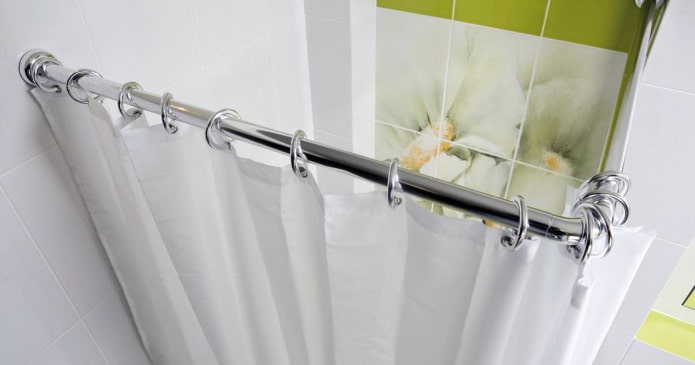

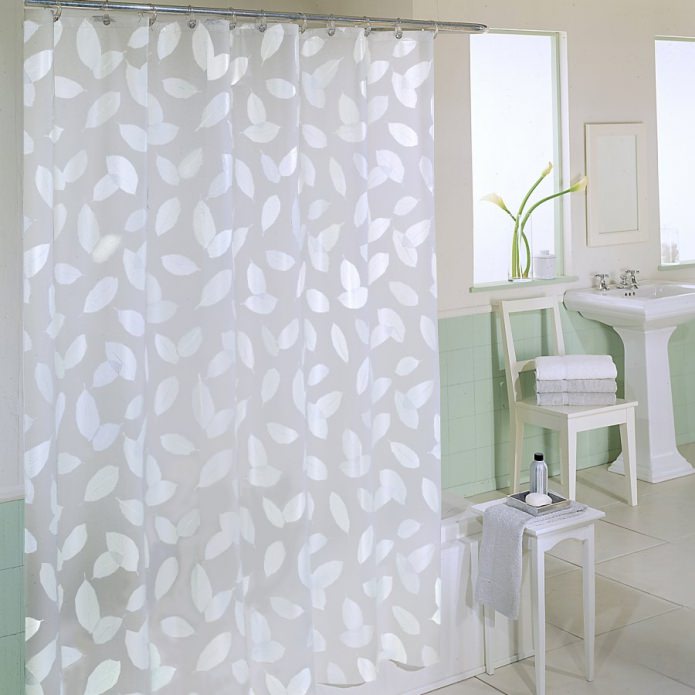
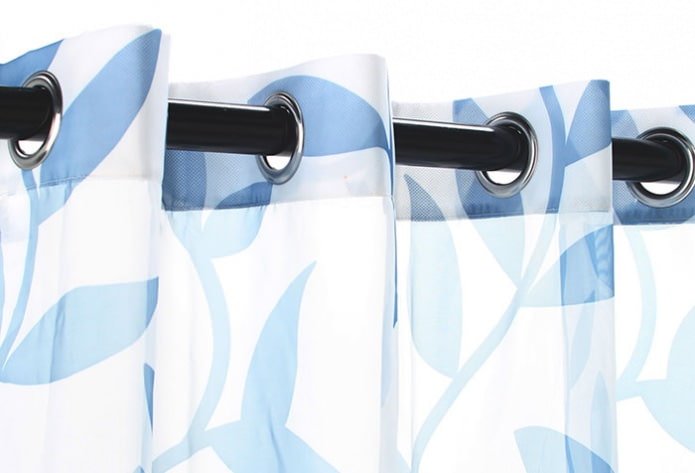

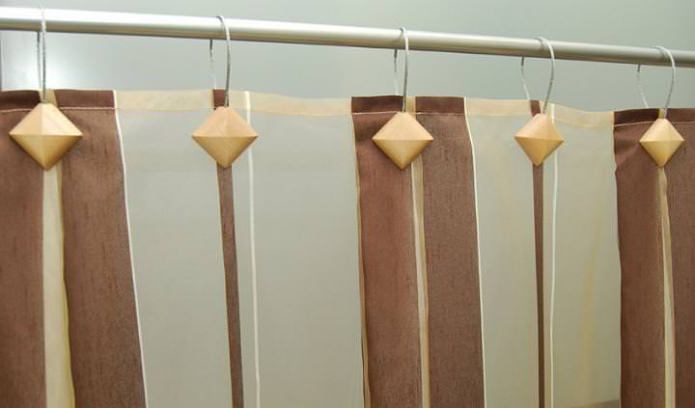
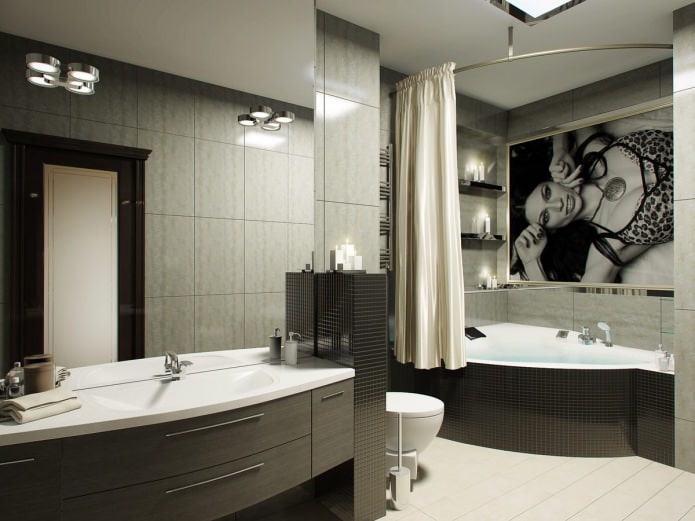
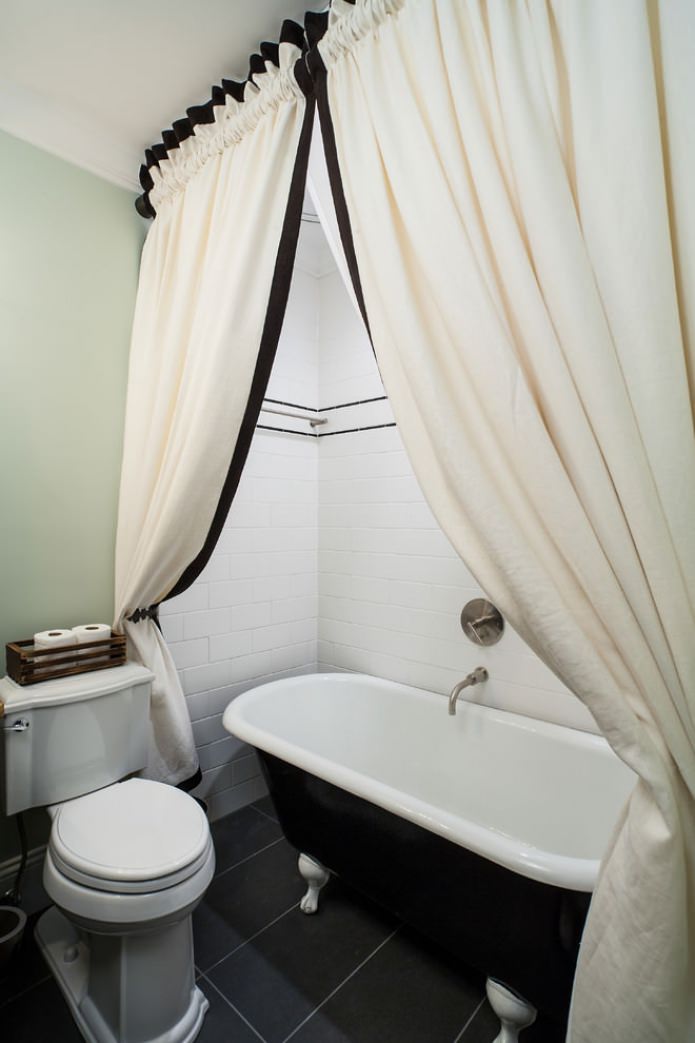
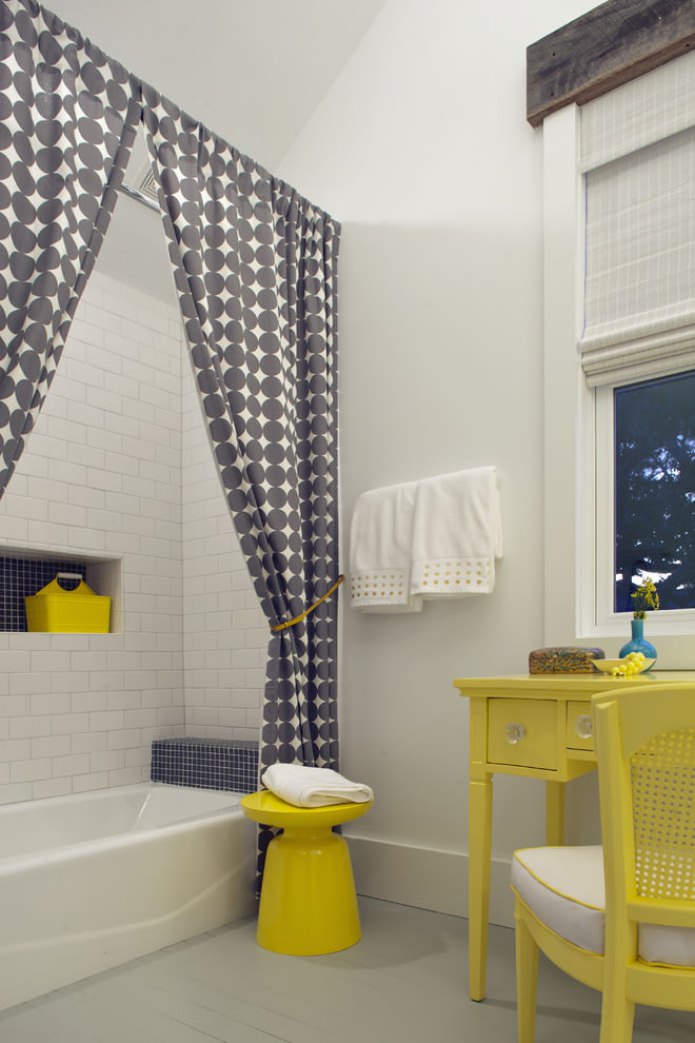
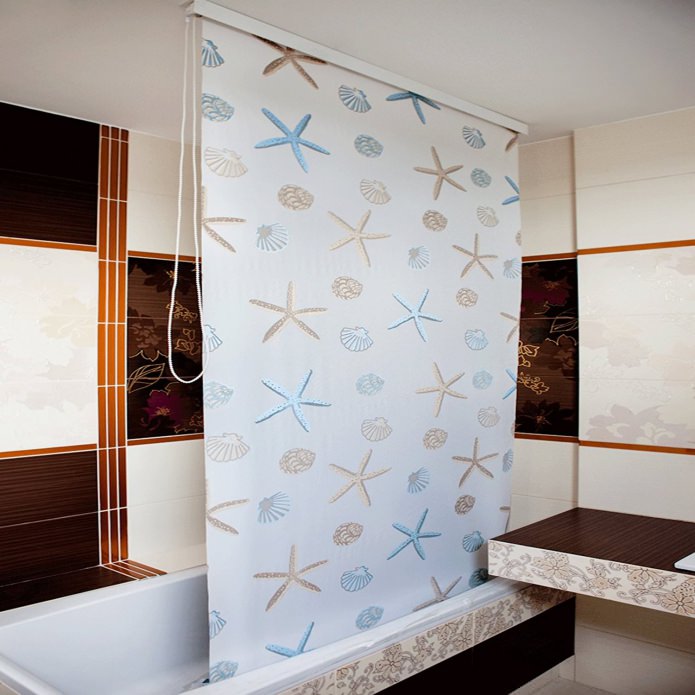

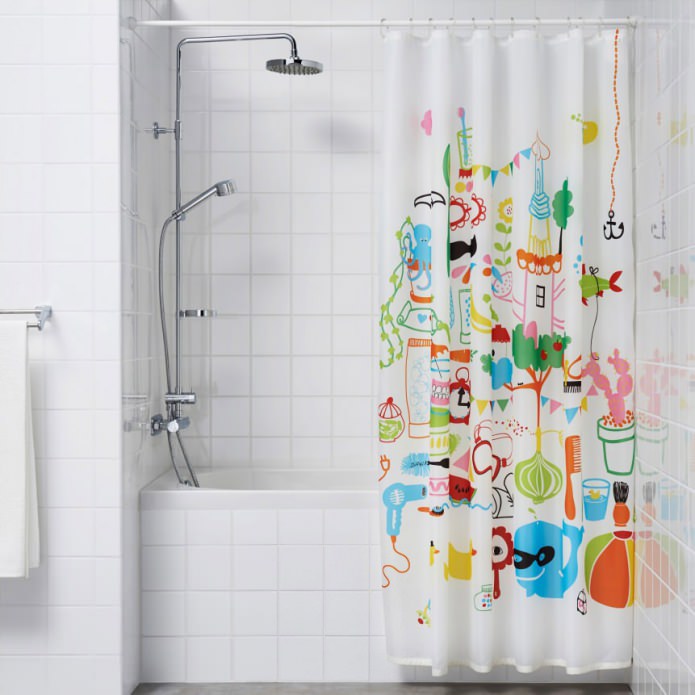


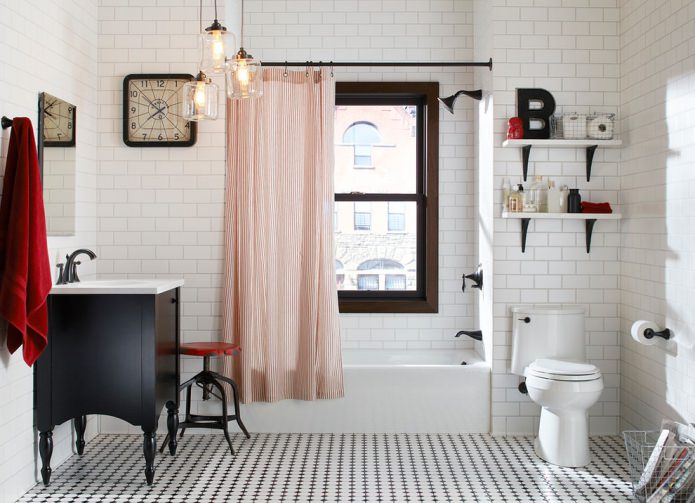
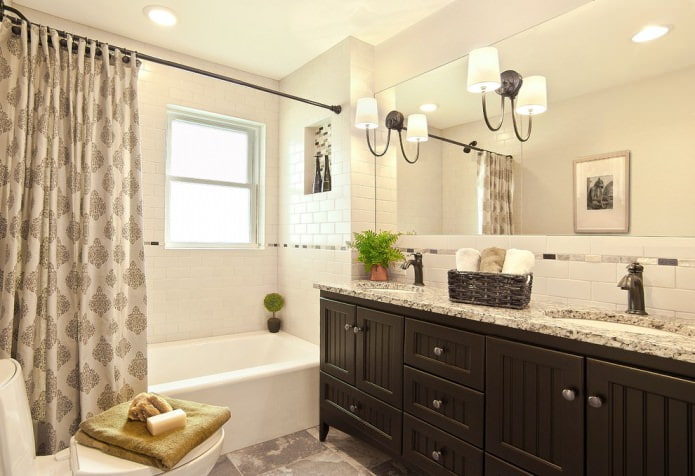


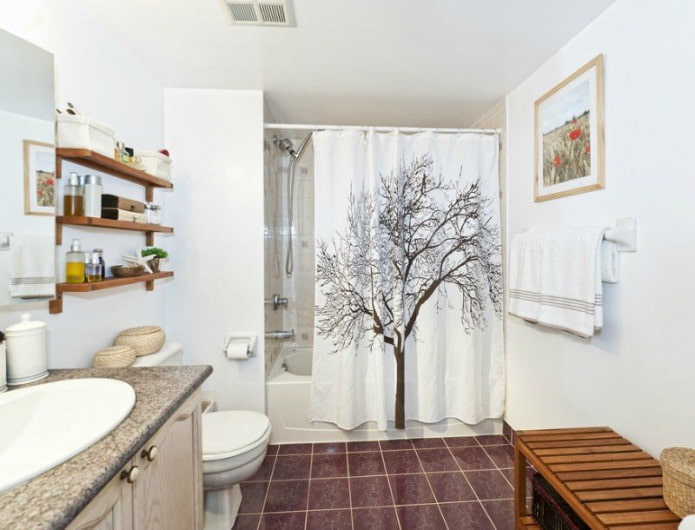
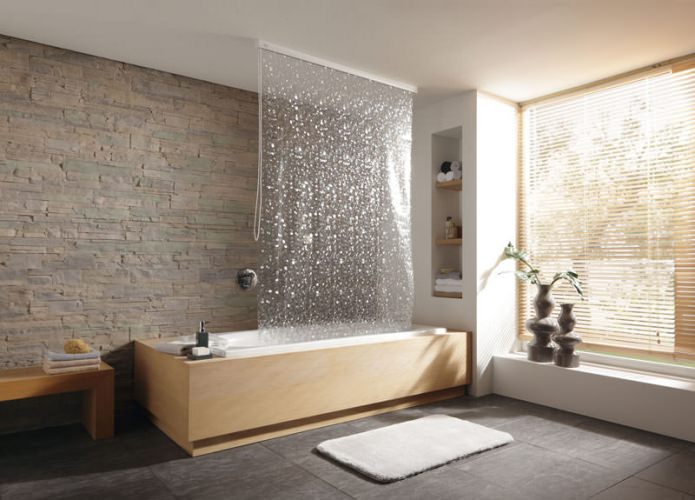
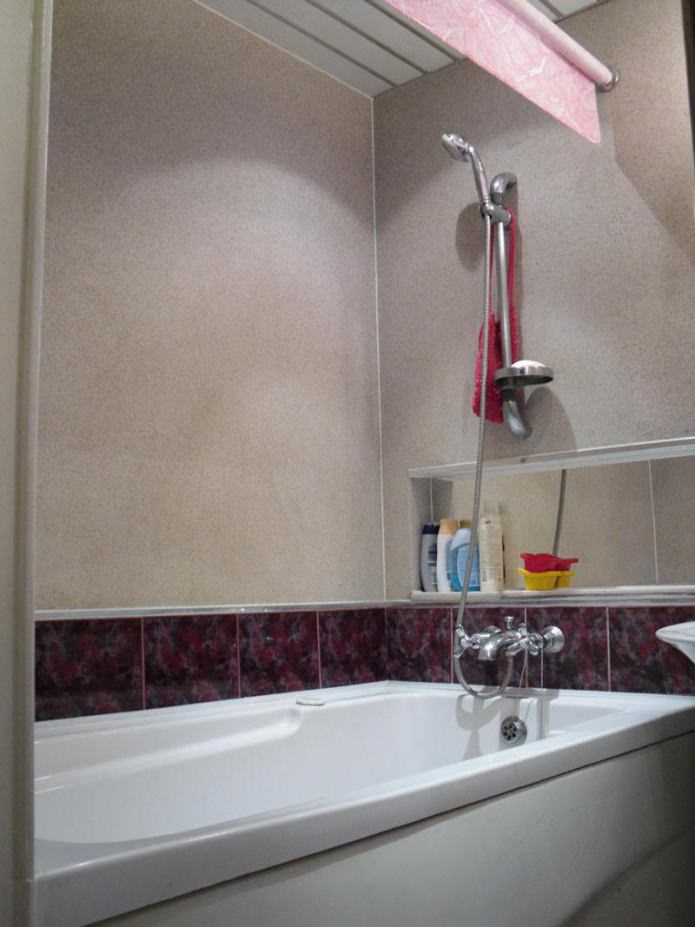
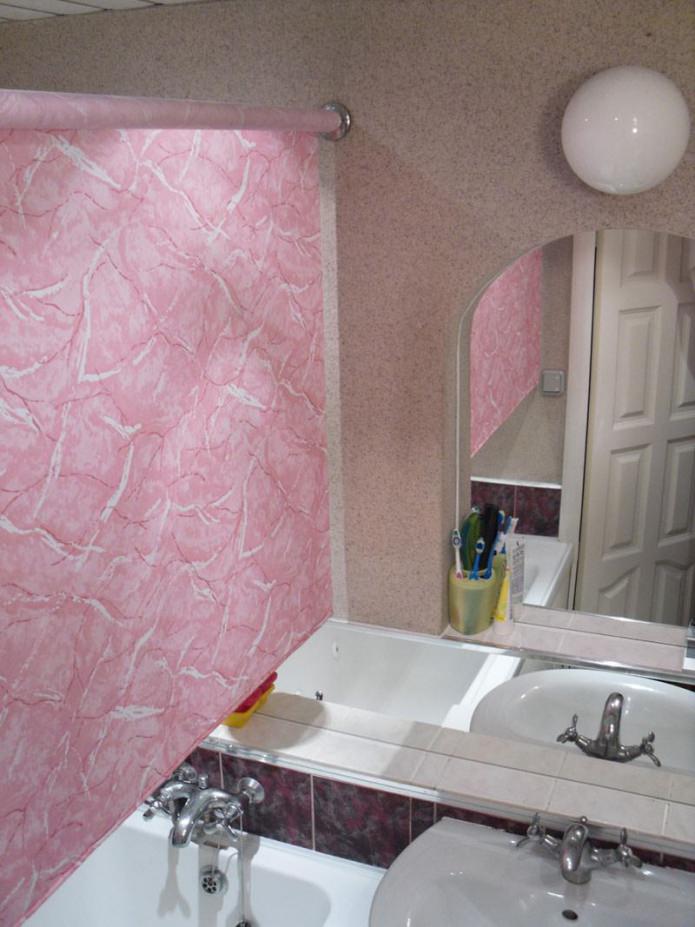
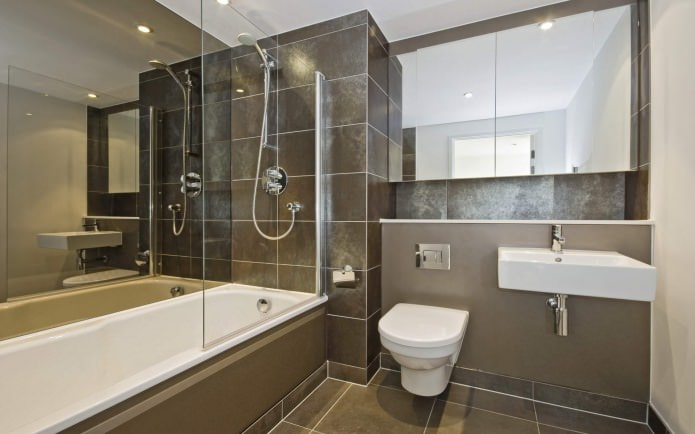
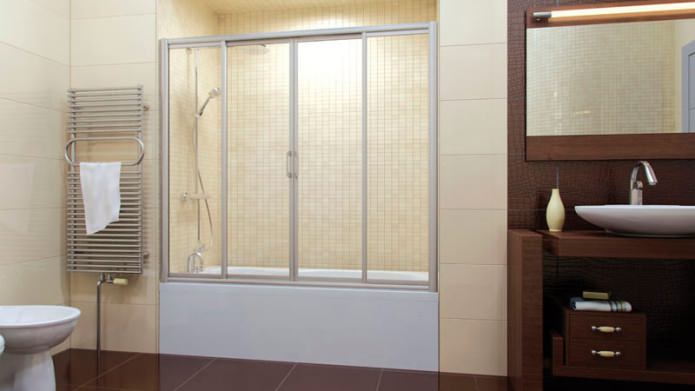

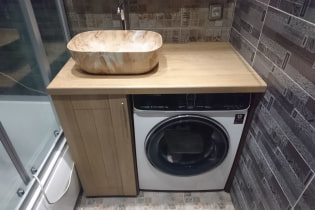 How to position a washing machine in a small bathroom?
How to position a washing machine in a small bathroom?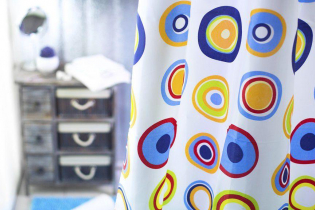 How to remove plaque from the bathroom curtain?
How to remove plaque from the bathroom curtain?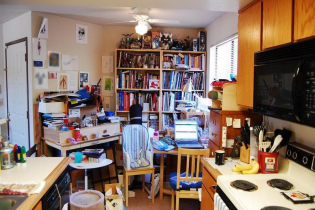 7 common mistakes in small apartment renovation that eat up all the space
7 common mistakes in small apartment renovation that eat up all the space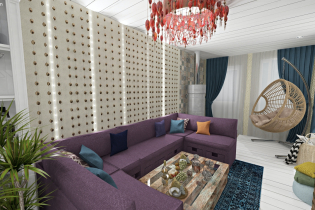 Apartment layout: how not to be mistaken?
Apartment layout: how not to be mistaken?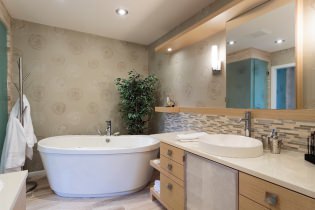 Wallpaper for the bathroom: pros and cons, types, design, 70 photos in the interior
Wallpaper for the bathroom: pros and cons, types, design, 70 photos in the interior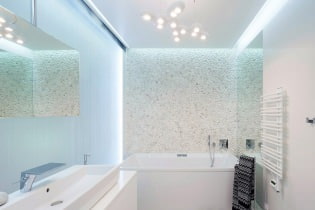 Modern bathroom interior: 60 best photos and design ideas
Modern bathroom interior: 60 best photos and design ideas